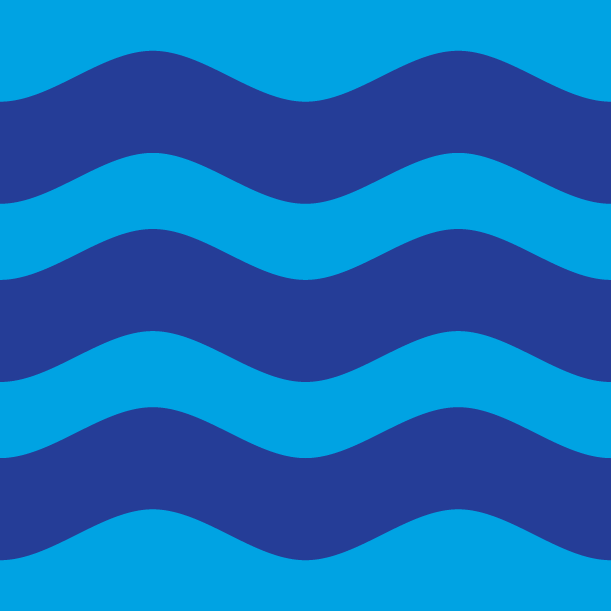Birds Who Call Our Riverfront Home
Our rivers are teeming with different species of birds that utilize the waterfront habitat for living and hunting. We all know the Canadian Goose, Mallard Duck, and House Sparrow pretty well, so let’s take a look at some lesser-known birds who call our rivers home.
The Spotted Sandpiper is a shore bird—which means they spend their days foraging for food on the ground or in shallow water. They measure just over 7” in height, with a brown and white body, short yellow legs, and a skinny orange bill. They build their nests on the ground, and after the female lays eggs, the male will take over as the incubator by sitting on them until they hatch.
The Great Blue Heron is one of the largest birds found along our riverbanks. They can grow up to 54” tall (the height of a 10 year old child), with a blue-grey color and a black crown. Their long skinny necks and dagger-like beaks are used to catch fish with agility and skill. They’re known as wading birds because they use their long legs to walk through deep water.
The Green Heron is rather short and stocky compared to other herons. They spend their time standing motionless at water’s edge, hunting for fish and amphibians. Their short legs make Green Herons unsuited for wading, so they usually stand on solid ground. They’ve been known to lure fish by dropping insects into the water, then snatching the fish when they come for the bait.
The Bald Eagle is one of the most well-known birds of prey, but you might not be aware they can be found in Fort Wayne. They prefer to nest in forested areas near water, using the tallest trees to build their nests. Typically 5-6 feet wide, bald eagle nests are built to be extremely sturdy, since unlike other birds, bald eagles return to the same nest year after year. They hunt and feed on rodents and other small animals, diving at speeds up to 99 mph. They’ve also been known to harass other birds mid-air in an attempt to steal their prey.
The Belted Kingfisher is a stocky, large-headed blue-grey bird with a bushy crest on top of its head. They can be identified by the white collar around their neck and band of blue-grey feathers on their chest. They tend to make their homes along river banks that have a steep edge, so they can tunnel into the dirt and clay to build their nest. They perch by the water’s edge to hunt, plunging in to catch their prey.
The Cliff Swallow is a small brownish bird with a dark throat and white belly. They feed on flying insects that they catch mid-air. Traditionally, they build their mud nests on vertical cliff faces, but in urban settings, they typically choose the underside of bridges. Boaters and kayakers along our river might mistake their colonies for hornets’ nests.
The Red Bellied Woodpecker is a small bird with a striking black-and-white striped back and red cap. Bucking the assumption about their name, they spend more time picking at the surface of bark rather than drilling into it. They use their sticky saliva and barbed tongues, which they can stick out nearly 2 inches past the end of their beaks, to snatch insects from deep tree crevices.
The Wood Duck has a unique shape among ducks, with a boxy crested head, thin neck, and long broad tail. Unlike most waterfowl, they perch and nest in trees, and their excellent maneuverability allow them to fly through the woods. Males have glossy green heads that bob back and forth when they swim, much like a chicken walking.
There are many other types of birds that call our rivers home:
- Canadian Goose
- American Coot
- Mallard Duck
- Blue jay
- Cardinal
- European Starling
- House Finch
- House Sparrow
- Ring Billed Gull
- Yellow Throated Warbler
- Black Capped Chickadee
- Hairy Woodpecker
- Great Horned Owl
The library is a great resource for bird guides so you can identify birds on your own and learn more about their habitats. The best time to go birdwatching is between 6-10am, when they’re most active. A good pair of binoculars can vastly improve your view and ability to identify different types.
 Kelly Benton joined the Riverfront staff in 2019 as a special events coordinator. She lives downtown with her husband and two sons, and is excited about all of the development and buzz happening around the rivers. In her free time, she enjoys taking pictures, biking, hitting up the local breweries, and taking long walks through West Central with her family.
Kelly Benton joined the Riverfront staff in 2019 as a special events coordinator. She lives downtown with her husband and two sons, and is excited about all of the development and buzz happening around the rivers. In her free time, she enjoys taking pictures, biking, hitting up the local breweries, and taking long walks through West Central with her family.

